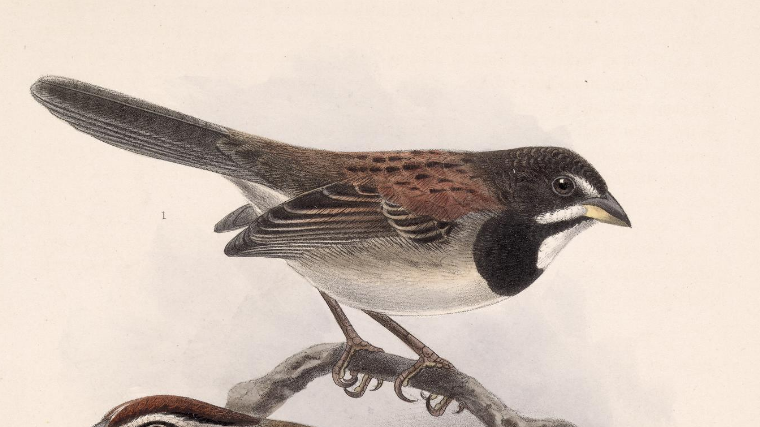
It was a common enough fate in the early days of American ornithology: the same species of bird formally described and named more than once, swelling the synonymies and causing confusions great and small until the polynomy was resolved.
It happened to this fine-looking passerellid, the black-chested sparrow. Jean Cabanis published the name humeralis in 1851, taking it from a specimen label in the Berlin museum; thirty-five years later, Robert Ridgway innocently described the species as new, again, naming it for Fernando Ferrari Perez Aimophila ferrariperezi. The mix-up was minimal, not least because the bird was still so very little known, and it was cleared up just a few months later when Osbert Salvin and Frederick Ducane Godman established the two nominal species’ identity — notably, basing their conclusion on photographs rather than on examination of Ridgway’s type in skin.
All very collegial, all very straightforward, all very helpful.
And all very different from Charles Bonaparte’s comments, published just a couple of years after Cabanis announced the new species. Bonaparte wrote in 1853
I had dedicated a sparrow to Mr. Dubus [curator of the museum in Brussels], who had planned to illustrate it in his beautiful ornithological plates [Dubus’s Esquisses ornithologiques]…. I now find it published by Cabanis as [Aimophila] humeralis. Here is what I wrote about it several years ago on the basis of a fine specimen collected near Mexico City and now no. 3026 in Brussels….
Bonaparte goes on to copy out the Latin diagnosis he composed but failed to publish in time.
We all get scooped now and then, and it doesn’t feel very good. But really, Prince?

